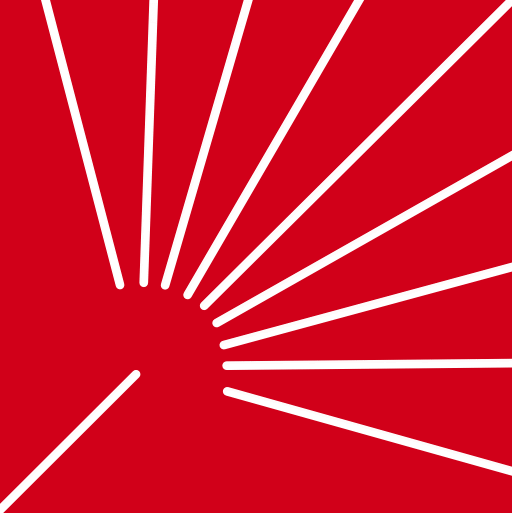Description of the VET system
Announcement of the National Competition for Vocational School Students – WorldSkills Croatia 2024.
10. April 2024.
Cedefop’s ReferNet Network Partnership Forum will take place in Croatia for the first time
4. April 2024.
The Agency has contracted a new ESF+ project Further Implementation of the Vocational Education Curriculum Reform
6. March 2024.
The successful presentation of the new system for evaluating non-formal and informal learning in the Republic of Croatia
6. March 2024.
The Third National Conference on Quality Assurance in Vocational Education and Training
22. February 2024.
Cedefop Video Award
24. January 2024.
The Conference for Directors of Secondary Vocational Schools 2023
28. August 2023.
WorldSkills Croatia 2023 competition
16. May 2023.
The 7th Days of VET Teachers in Šibenik, Croatia
21. March 2023.
The 11th International Andragogic Symposium
2. February 2023.
Event announcement – 15th Lifelong Learning Week and 9th International Andragogic Symposium
13. July 2021.
The 13th edition of EPALE CROATIA Newsletter published
8. July 2021.
The 5th Days of VET Teachers – closing ceremony
17. June 2021.
The 5th Days of VET Teachers – opening ceremony
15. June 2021.
UNESCO – UNEVOC Strategy 2021 – 2023
4. June 2021.
New partnership within the Erasmus + network
23. February 2021.
New partnership within the Erasmus + network
23. February 2021.
New Erasmus + project for Agency for VET and Adult Education
23. February 2021.
SELFIE for Work-based Learning
10. February 2021.
EPALE Community of European VET Practitioners
9. February 2021.
Changes to the Regulations and recommendations for organising and implementing VET student’s competition in the academic year 2020/2021
9. February 2021.
Regulations and recommendations for organising and implementing VET student’s competition in the academic year 2020/2021
1. February 2021.
The first WorldSkills Croatia newsletter – January 2021
28. January 2021.
Professional development seminars for VET teachers and trainees
27. January 2021.
Call for Expression of Interest for Andragogic Workshops
15. January 2021.
Classroom precautions in adult education – additional instructions
14. January 2021.
Apply for VET teachers’ professional development seminars
30. December 2020.
Merry Christmas and Happy New Year!
24. December 2020.
Classroom precautions in adult education – additional instructions
9. December 2020.
Professional development seminars for mentors in companies and teachers in the dual education system
9. December 2020.
New European strategic framework for vocational education and training
1. December 2020.
European Vocational Skills Week: jobs for the future through VET
11. November 2020.
Admitting clients – important notice
5. November 2020.
Recommendations / framework for achieving learning outcomes in the academic year 2020/2021
14. October 2020.
Instructions for distance learning in COVID-19 pandemic
14. October 2020.
European Vocational Skills Week 2020
13. October 2020.
Apply for VET teachers’ professional development seminars
12. October 2020.
Join the #CodeWeek (10 October – 25 October 2020)
2. October 2020.
The 8th International Andragogic Symposium
25. September 2020.
The 14th Lifelong Learning Week
22. September 2020.
VET students’ competitions in the academic year 2020/2021 – important notice
17. September 2020.
COVID-19 related teaching models and classroom precautions in adult education
15. September 2020.
Instructions for conducting professional exams in the session October – December 2020
15. September 2020.
Call to institutions: join the 14th Lifelong Learning Week
8. September 2020.
Join the European Vocational Skills Week 2020
7. September 2020.
Professional development seminars for VET teachers and trainees
4. September 2020.
The winner of the “Dandelion of Knowledge 2020” award for accomplishments in adult education
2. September 2020.
The contract for non-refundable grant for “e-schools: Establishing a System for Developing Digitally Mature Schools (phase II)” signed
28. August 2020.
Financing decision for UP.03.2.2.05.0001 “e-schools: Establishing a System for Developing Digitally Mature Schools (phase II)”
18. August 2020.
CEDEFOP Photo Award 2020: your green or digital skills story
3. August 2020.
European Skills Index 2020
14. July 2020.
The education system in the Republic of Croatia consists of:
- pre-school education
- primary (including lower secondary) education
- (upper) secondary education
- higher education.
High schools (secondary education), depending on the type of curriculum they implement, are:
- Grammar schools (general or specialized) lasting for four years.
- Vocational schools, lasting from one to usually three or four years, exceptionally five, upon the completion of which the students acquire a qualification of a certain level, scope, profile and quality which is proven by a public document whose content and form are prescribed by the ministry responsible for education.
- Art schools (music, dance, art and other, determined by the type of curriculum) lasting a minimum of 4 years.
The existing system of vocational education covers 66.9% of the total secondary school population, i.e. 96,018 students in 300 schools.
The system of regular vocational education for acquiring low and intermediate level qualifications, according to educational programs, consists of:
- one-year and two-year programs of lower education in 8 educational programs. The number of students attending these programs is 159, which is 0.17% of the total number of vocational education students, or 0.1 % of the total secondary school population.
- three-year programs for occupations in industry and crafts in 139 educational programs. They are attended by 26,995 students, which is 28.1% of the total number of vocational education students, or 18.8% of the total secondary school population.
- four-year technical programs and similar orientations in 83 educational programs. They are attended by 63,442 students, which is 66.1% of the total number of vocational education students, or 44.1% of the total secondary school population.


SHARE